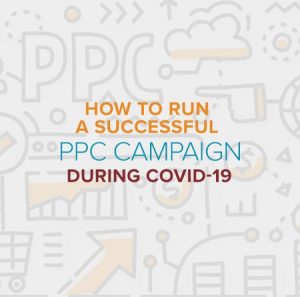It all started with an Email – The Email Era
Email was invented in 1972 and launched us into a communication revolution.
For the next 6 years email would be pure. People would only send messages to those they knew personally. These were the days when getting email was a treat! “You’ve got mail” was the most exciting sound your computer made.
Sadly, those days are long gone and now we all receive a constant barrage of email which offer little to no value.
It took 6 years from the invention of email to see the invention of SPAM. Peopled figured out that email could be used to send unsolicited and unwanted messages.
Over the last 39 years we’ve only gotten better at finding ways into customers inboxes in hope they buy from us. Sure, it’s now possible to “personalize” emails, trigger emails based on customer actions, and let people unsubscribe from emails,
However, many of us are still just dressing up the same unwanted emails.
“The times they are a changin”
Marketing:
Marketing is the activity, set of institutions, and processes for creating, communicating, delivering, and exchanging offerings that have value for customers, clients, partners, and society at large.
Due to the ease and low cost of sending email, we sent emails flying as fast as we could. Many of these emails adding little to no “value” to the customer.
We became focused on sending almost random offers to consumers that worked some small percentage of the time. These kinds of tactics overloaded the customer’s inbox.
They ultimately turned the inbox into a disaster where users couldn’t tell the good from the bad. Spam filters do a good job of filtering this for us, but we still get an enormous amount of unwanted mail.
Bring in the Robots – The Marketing Automation Era
At the same time that the effectiveness of blindly blasting billions of emails around the web was decreasing, consumer protection laws around email marketing were increasing.
This made it both harder and less effective to legally continue with old email marketing practices. A new approach to email marketing was needed.
The approach changed. Instead of blasting out unsolicited emails, we started creating valuable content in order to draw people in. The strategy was called Content Marketing and Marketing Automation was the tool of choice to deliver the content and capture leads.
Starting in 1992, marketing automation helped enhance sales relationships by allowing marketers to build-out complex email workflows. These workflows were triggered based on a user’s past actions on the company’s marketing website.
This was an extraordinary achievement back in 1992 and is a technology that is still being adopted by many industries today.
Marketing Automation helped us capitalize on the constant stream of resources produced by content marketing. It allowed us to collect more email addresses and other valuable customer info.
It helped us create targeted email campaigns and better understand how they positively or negatively impacted revenue.
It isn’t a stretch to say that Marketing Automation made it possible for a new generation of marketers to make their mark on the business world.
However, the type of Marketing Automation that worked in 1992 has been so widely adopted by companies that customer inboxes are once again overwhelmed.
This is why we see abysmal email performance benchmarks like 2.5% click rates and 21% open rates across industries.
So far, I’ve been talking about email but the truth is that over the last 36 years the number of ways to communicate with customers has grown exponentially.
Further, the actual products that companies offer are being delivered in more ways than ever before. They’re delivered by web, mobile and tablet while still often being available by traditional methods such as phone and physical stores.
Marketing Automation has helped improve the number of customers we get from the top of the funnel to the middle of the funnel. We are now facing a new set of challenges:
- Marketing Automation is based solely on how customers interact with marketing, not how they interact with the whole company including product, sales and support.
- Marketing Automation only focuses on the sending of messages and creation of content to maximize opens, clicks and conversions.
- Marketing Automation does not look to provide a better paying customer experience, it effectively abandons the customer after they have made their first purchase.
Automate or Die – The Growth Automation Era
The view of our customers continues to get more complicated in a post marketing automation world.
We need to engage with customers throughout a fractured user experience across multiple devices; we need to track diverse revenue streams from the same customer; we need to understand how they influence other buyers.
At the same time businesses of all types are starting to think in terms of lifetime value.
Lifetime Value:
The total amount of revenue earned by a company from a customer over their entire lifetime as a customer.
In simple terms, lifetime value is all about maximizing revenue from each customer. While this may be a simple task in the physical world, in the digital world the technical complexity has made it all but impossible.
Only the world’s most innovative technical companies can intelligently target customers with relevant marketing campaigns as they navigate through a modern digital experience.
Growing customer lifetime value is not a simple challenge of measuring user engagement, creating a list of customers likely to cancel and sending a friendly digest email once a month.
Growth Marketing requires tactical campaigns that deliver 1:1 experiences to millions of customers. It requires the coordination with all departments, their related systems and how the customer is using our product, service or store.
One of the key motivations for this new way of thinking is the adoption of modern business models such as subscriptions or the sharing economy.
These business models require customers to buy again and again to work. What was once traditionally a marketing or sales-only concern, today has to be a concern of every department.
Everyone in the company, not just marketing, has to find ways to Grow customer lifetime value. This can be as simple as making sure that a customer has a good support experience.
Or as complex as targeting users based on past purchase behaviour, usage patterns and social influence.
Growth:
To increase gradually in size, amount, etc.; become greater or larger; expand:
Companies have to look beyond basic email or in-app messaging automation to enhance the customer relationship and increase revenue per customer.
The current tools available lack the ability to target users based on their Lifetime Value and the ability to make them an offer to increase it.
Noticing a gap in functionality, many enterprises built-out their own behavioral and personalized marketing platforms. Most notably, Dropbox’s referral marketing engine and Amazon’s behavioral marketing platform.
Think about the campaign personalization you can have by knowing the financial relationship, customer health score and usage habits of your customers.
Given a simple to use admin interface and a fully open API, every department in your company can use this data to grow lifetime value. This is the future of our Growth Automation journey.
As enterprises like Amazon, Uber and Airbnb have been exploring these campaigns they’ve had to command substantial technical resources to build Growth Automation tools.
While building these tools, they’ve discovered the complexity of the problem and the platform sophistication needed to solve it. To this point, often the simplest sounding campaigns like ‘coupons’ have become large scale internal projects.
Technical teams require large amounts of financial resources to operate growth marketing campaigns. However, it’s often the problems hidden under the surface that negatively impact companies the most.
Developers building internal marketing tools are distracted from developing value directly in-line with the company’s main offering.
The cost and time required to maintain these systems is often overlooked in original budgeting and ultimately leads to a stale, underperforming project.
We need a platform that allows us to easily create campaigns that automatically engage customers and increase lifetime value.
This platform needs to reduce our dependency on technical teams, make it possible to report regularly to our executives and work with our existing platforms throughout Sales, Billing and Customer Success.
It must be able to automatically grow revenue from a customer’s first purchase, drive referrals from happy customers and even extend the length of their time as a customer.
Expand your customer footprint
At SaaSquatch, we’ve dedicated ourselves to Growth Automation.
We’re making it possible for companies to run campaigns that grow customer lifetime value without dedicated development teams.
We’re putting the customer experience first, not letting it be an afterthought. We’re making customer data accessible instead of locking it away. We’re bringing intelligence and automation to growing revenue.
Join us on our journey to build the world’s leading Growth Automation Suite and never stop growing your customer footprint.
Business & Finance Articles on Business 2 Community(34)
Report Post






